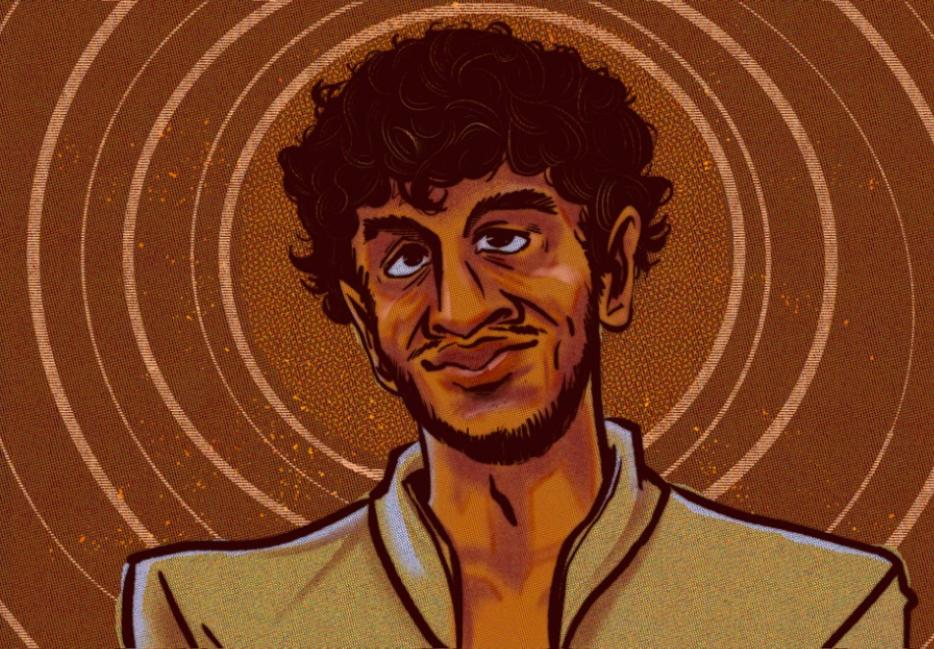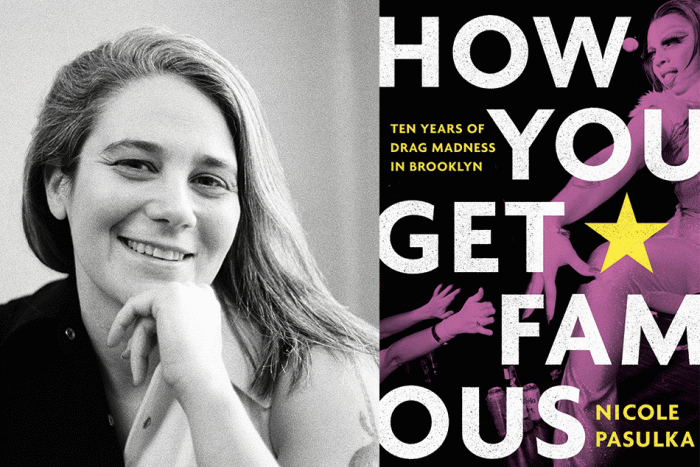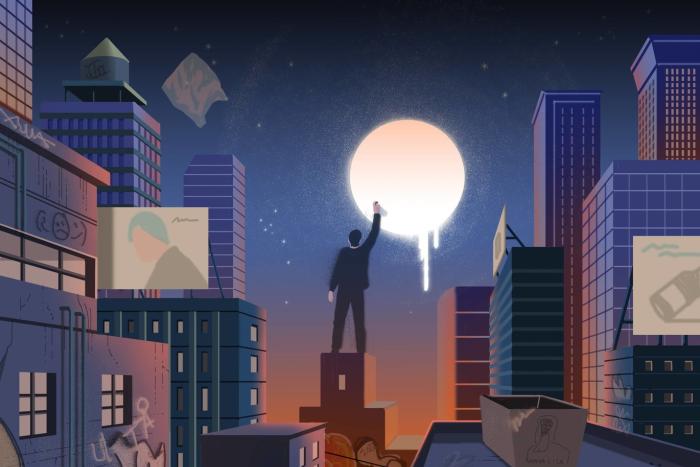Welcome to Wayward Watching, a column on the seen and unseen in film.
Late one night in Hiroshima, a woman is driving an older man, a visiting actor, back to his hotel. They are in an old red Saab 900, which the actor bought fifteen years ago in Tokyo. He isn’t allowed to drive his own car because of some arcane rule at the theatre residency where he has been invited to direct a play. Initially he had to be persuaded to take the woman on as his designated driver, but he has come to appreciate having her around. His affinity has its limits: the red Saab is, after all, his sanctum, a green room where he is accustomed to contemplating, alone, his messy art and life. He learns not to mind practicing his lines aloud in the back seat. He never lets her smoke inside.
That night the actor is slightly drunk and sitting in the passenger seat. Moments ago, they dropped off one of his colleagues from the residency who happened to also know the actor’s dead wife. The colleague said something during the ride that had taken the actor by surprise, something that made him wonder about the extent to which he ever understood his wife. Now that it’s just the two of them in the car, the woman—by now, both chauffeur and confidante—speaks up. “He didn’t appear to be lying,” she says, referring to his colleague. “I know because I grew up with liars.” She tells him what it was like, growing up with a mother she couldn’t trust to save her life. He responds by lighting up a cigarette from her pack, then offers to light another one for her. “Are you sure?” she asks, before accepting at once. He slides open the moonroof, and they take quick drags and hold their cigarettes above their heads to allow the smoke to escape. They look up and glance at the cigarettes in their hands, glimmering like stars in the distance.
Halfway through Ryusuke Hamaguchi’s Oscar-winning film, Drive My Car, we see two cigarettes sticking out of the roof of a car, framed by the city lights and the night sky above. The moment seems almost inadvertent in its overwhelming beauty, one of those throwaway scenic shots meant to mark the transition to the next scene. And yet the image also sums up the essence of Hamaguchi’s vision: three hours of running time is contained in that one frame. What gets relayed is a sense of connection—two new friends baring their souls at night—and also liberation. The woman and the actor might as well have been holding up little torches of freedom. Having just revealed to one another their respective traumas, their faces appear carefree, unburdened by the past.
I’ve always believed that a carefully chosen still makes for the more appropriate film poster, instead of airbrushed headshots or those post-production images meant to hard-sell the central theme. The publicity materials for Drive My Car, for instance, predictably feature the two protagonists, played by Tôko Miura and Hidetoshi Nishijima, posing with the red Saab in a parking lot or somewhere in the middle of a road. Imagine, instead, a billboard with no garish fonts and no Saabs, just two hands holding cigarettes up in the air one night.
In Camera Lucida, Roland Barthes famously wrote about the punctum of a photograph: the one accidental but meaningful detail in an image which “rises from the scene, shoots out of it like an arrow, and pierces me.” The punctum of a movie, I feel, is an incidental still frame, that rises up from the sequence of scenes and pierces the viewer, and is therefore best placed as a standalone image to lure more viewers in.
In Joachim Trier’s The Worst Person in the World, Julie drifts through her twenties studying medicine, then psychology, even writes a provocative op-ed in the wake of #MeToo, before ending up as a still photographer on a film set. We see Julie, played by Renate Reinsve, working alone in her apartment in the final scene, touching up the portrait of an actress on her desktop. Moments before, she discovered that the actress is married to one of her ex-boyfriends, Eivind— while packing up her camera by a window, she’d seen them kiss on the sidewalk and then push a baby stroller together down the road—but over the course of the film, she has learnt to tragically accept that the prospect of a romantic relationship is not the governing force in her life. She first met Eivind years before when she gatecrashed a party one night in Oslo. Back then, she was dating an older man—Aksel, a graphic novelist—but the attraction to Eivind was immediate. That night the two of them didn’t kiss, but instead spent the hours until dawn chatting, sniffing each other’s armpits, and later, watching each other pee in bathroom stalls.
More than the other two films in his Oslo trilogy, Trier seems alert to visual possibilities in The Worst Person in the World. In just about every moment, the camera seems aware of what Julie, as well as the audience, might be watching, which is why it was disappointing to find multiple film critics reviewing the movie more as a book. Yes, the story is revealed in grandiose chapter headings like a 19th-century novel (there is even a prologue and an epilogue), and there are the usual blind spots that come into play when a male filmmaker portrays the life of a younger woman, but the fact that Trier is thinking in terms of images, not plot, is evident in Julie’s eventual career choice. The very first shot is of Julie with her back to the camera—surely a nod to the opening image in Andrei Tarkovsky’s Mirror—smoking a cigarette and staring off of a porch. Later, for three silent minutes in the middle of the film, she traipses home through the streets of Oslo and at one point is moved to tears by the splendour of the skyline at dusk. Richard Brody wrote in The New Yorker that the film’s popular freeze-frame sequence, where Julie imagines the world literally stopping in its tracks so that she can meet up with Eivind, is “superficial and . . . blatant,” but it seems to me that the scene becomes frustrating only if you’re expecting it to somehow advance the storyline.
Once, in my early twenties, when I fancied myself an aspiring scriptwriter in Bombay, I was told that studio executives didn’t so much as squint at a screenplay if it didn’t have a crisp elevator pitch, a plot that could be neatly reduced to an epigram. (Decades ago, Satyajit Ray had mocked this practice by pointing out that even his contemporary Mrinal Sen’s experimental masterpiece, Bhuvan Shome, had conventional underpinnings, a story that could be summarized “in seven words: big bad bureaucrat reformed by rustic belle.”) To judge a film by its story, however, seems to me inadequate. If done well, the message still ends up being prioritized over the medium. A riveting dramatic scene on the page almost always feels tonally imprecise onscreen. I prefer the idea of a movie as a progression of mesmeric stills instead of a recorded form of theatre.
In his 1978 essay, “Uses of Photography,” John Berger outlines the difference between private and public photographs:
In the private use of photography, the context of the instant recorded is preserved so that the photograph lives in an ongoing continuity. . . . The public photograph, by contrast, is torn from its context and becomes a dead object which, exactly because it is dead, lends itself to any arbitrary use.
Staged promotional blowups are typically dead objects. They are prised away from the original meaning of the movie and frequently leave nothing to the imagination. Stills, on the other hand, are akin to those keepsake Polaroids you tuck away in your wallet and sometimes pin up to your desk. They tether you to the memory of watching the film or whet your curiosity about their significance. We are drawn to the “context of the instant” preserved in that one image, that arrested moment, and likelier to lose ourselves in it.






